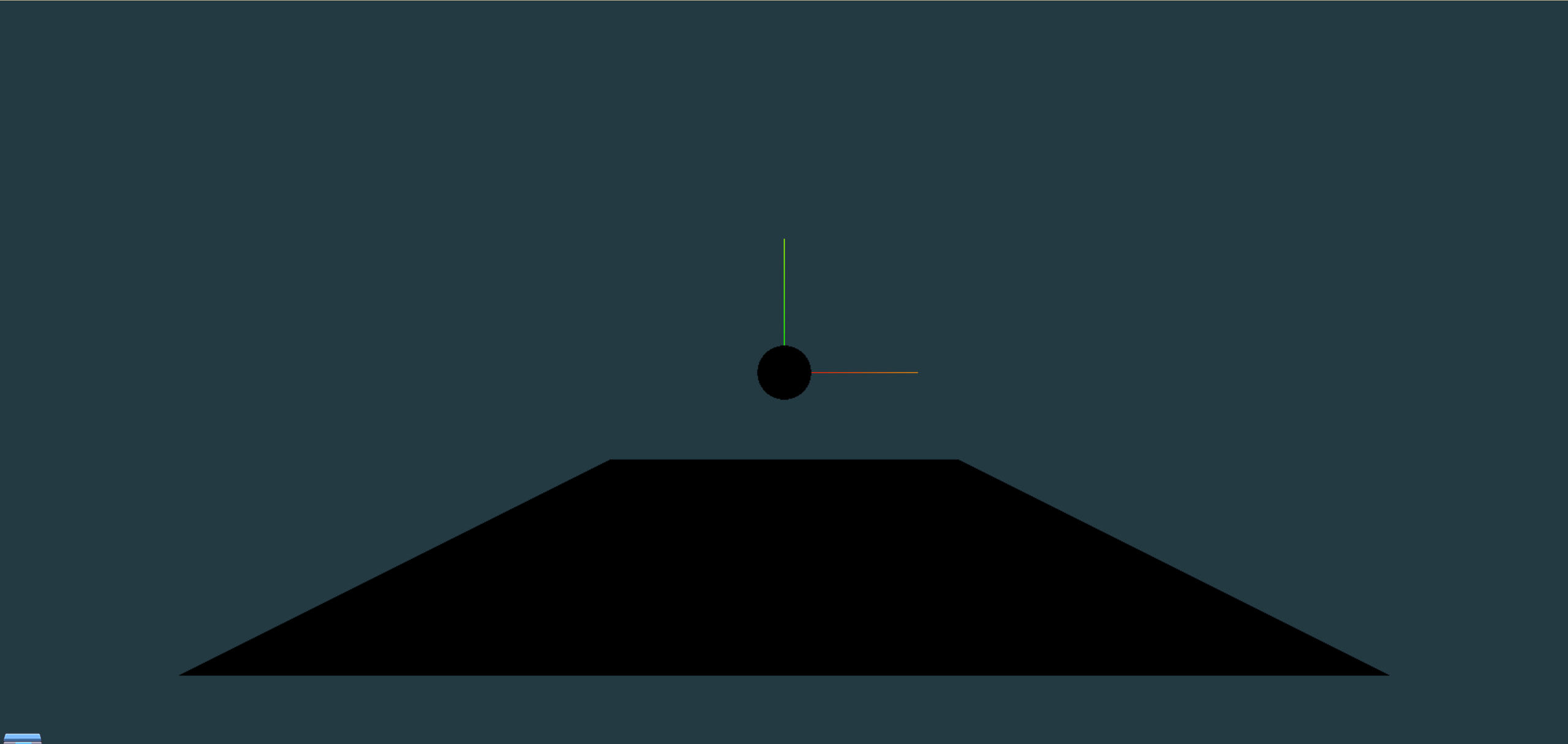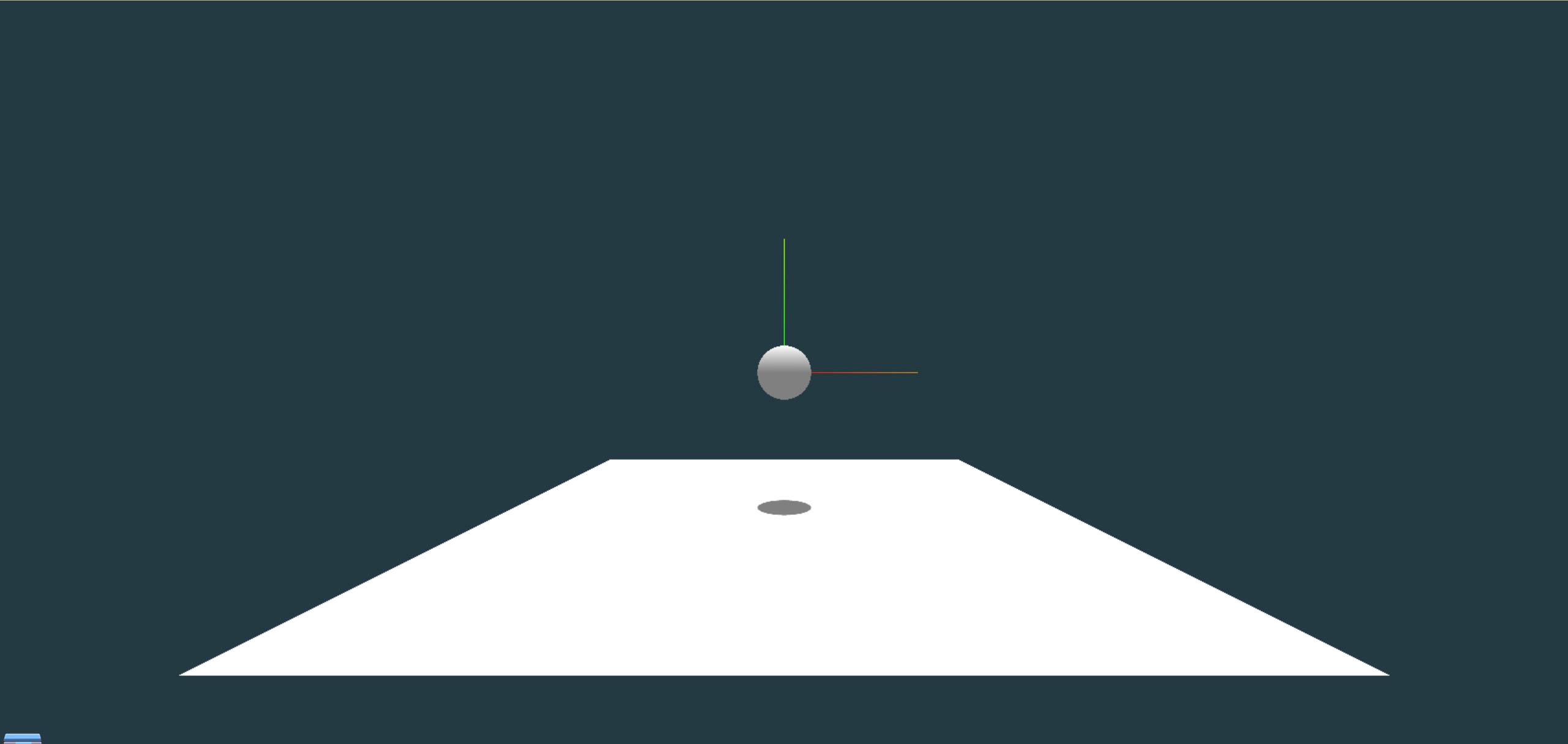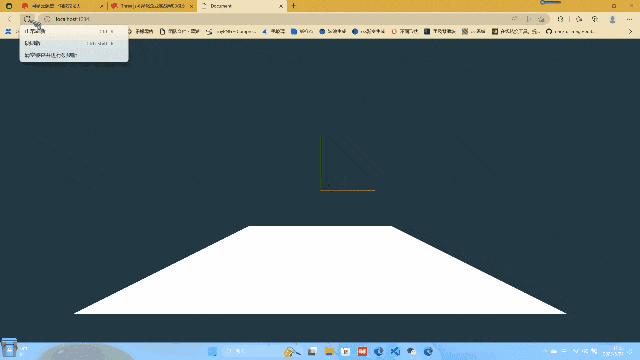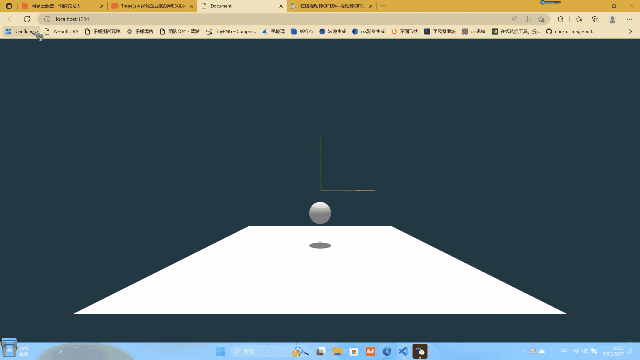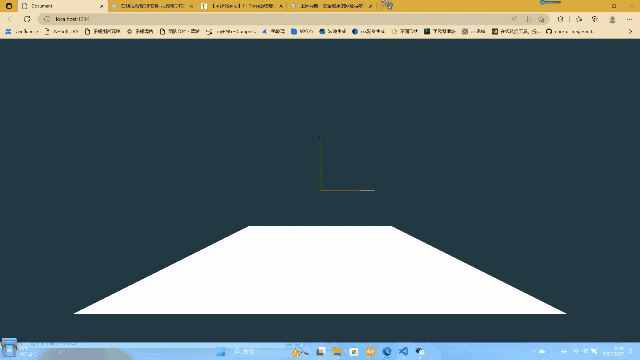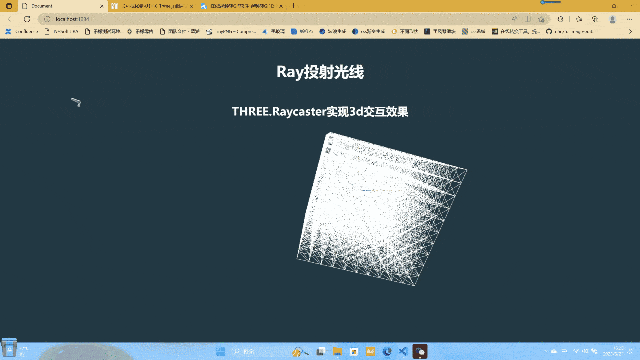1
2
3
4
5
6
7
8
9
10
11
12
13
14
15
16
17
18
19
20
21
22
23
24
25
26
27
28
29
30
31
32
33
34
35
36
37
38
39
40
41
42
43
44
45
46
47
48
49
50
51
52
53
54
55
56
57
58
59
60
61
62
63
64
65
66
67
68
69
70
71
72
73
74
75
76
77
78
79
80
81
82
83
84
85
86
87
88
89
90
91
92
93
94
95
96
97
98
99
100
101
102
103
104
105
106
107
108
109
110
111
112
113
114
115
116
117
118
119
120
121
122
123
124
125
126
127
128
129
130
131
132
133
134
135
136
137
138
139
140
141
142
143
144
145
146
147
148
149
150
151
152
153
154
155
156
157
158
159
160
161
162
163
164
165
166
167
168
169
170
171
172
173
174
175
176
177
178
179
180
181
182
183
184
185
186
187
188
189
190
191
192
193
194
195
196
197
198
199
| import * as THREE from "three";
import { OrbitControls } from "three/examples/jsm/controls/OrbitControls";
import gsap from "gsap";
import * as dat from "dat.gui";
import * as CANNON from "cannon-es";
console.log(CANNON);
const scene = new THREE.Scene();
const camera = new THREE.PerspectiveCamera(
75,
window.innerWidth / window.innerHeight,
0.1,
300
);
camera.position.set(0, 0, 18);
scene.add(camera);
const cubeArr = [];
const cubeWorldMaterial = new CANNON.Material("cube");
function createCube() {
const cubeGeometry = new THREE.BoxBufferGeometry(1, 1, 1);
const cubeMaterial = new THREE.MeshStandardMaterial();
const cube = new THREE.Mesh(cubeGeometry, cubeMaterial);
cube.castShadow = true;
scene.add(cube);
const cubeShape = new CANNON.Box(new CANNON.Vec3(0.5, 0.5, 0.5));
const cubeBody = new CANNON.Body({
shape: cubeShape,
position: new CANNON.Vec3(0, 0, 0),
mass: 1,
material: cubeWorldMaterial,
});
cubeBody.applyLocalForce(
new CANNON.Vec3(300, 0, 0),
new CANNON.Vec3(0, 0, 0)
);
world.addBody(cubeBody);
function HitEvent(e) {
const impactStrength = e.contact.getImpactVelocityAlongNormal();
console.log(impactStrength);
if (impactStrength > 2) {
hitSound.currentTime = 0;
hitSound.volume = impactStrength / 12;
hitSound.play();
}
}
cubeBody.addEventListener("collide", HitEvent);
cubeArr.push({
mesh: cube,
body: cubeBody,
});
}
window.addEventListener("click", createCube);
const floor = new THREE.Mesh(
new THREE.PlaneBufferGeometry(20, 20),
new THREE.MeshStandardMaterial()
);
floor.position.set(0, -5, 0);
floor.rotation.x = -Math.PI / 2;
floor.receiveShadow = true;
scene.add(floor);
const world = new CANNON.World();
world.gravity.set(0, -9.8, 0);
const hitSound = new Audio("assets/metalHit.mp3");
const floorShape = new CANNON.Plane();
const floorBody = new CANNON.Body();
const floorMaterial = new CANNON.Material("floor");
floorBody.material = floorMaterial;
floorBody.mass = 0;
floorBody.addShape(floorShape);
floorBody.position.set(0, -5, 0);
floorBody.quaternion.setFromAxisAngle(new CANNON.Vec3(1, 0, 0), -Math.PI / 2);
world.addBody(floorBody);
const defaultContactMaterial = new CANNON.ContactMaterial(
cubeWorldMaterial,
floorMaterial,
{
friction: 0.1,
restitution: 0.7,
}
);
world.addContactMaterial(defaultContactMaterial);
world.defaultContactMaterial = defaultContactMaterial;
const ambientLight = new THREE.AmbientLight(0xffffff, 0.5);
scene.add(ambientLight);
const dirLight = new THREE.DirectionalLight(0xffffff, 0.5);
dirLight.castShadow = true;
scene.add(dirLight);
const renderer = new THREE.WebGLRenderer({ alpha: true });
renderer.setSize(window.innerWidth, window.innerHeight);
renderer.shadowMap.enabled = true;
document.body.appendChild(renderer.domElement);
const controls = new OrbitControls(camera, renderer.domElement);
controls.enableDamping = true;
const axesHelper = new THREE.AxesHelper(5);
scene.add(axesHelper);
const clock = new THREE.Clock();
function render() {
let deltaTime = clock.getDelta();
world.step(1 / 120, deltaTime);
cubeArr.forEach((item) => {
item.mesh.position.copy(item.body.position);
item.mesh.quaternion.copy(item.body.quaternion);
});
renderer.render(scene, camera);
requestAnimationFrame(render);
}
render();
window.addEventListener("resize", () => {
camera.aspect = window.innerWidth / window.innerHeight;
camera.updateProjectionMatrix();
renderer.setSize(window.innerWidth, window.innerHeight);
renderer.setPixelRatio(window.devicePixelRatio);
});
|
